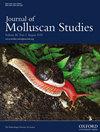Holocene molluscan successions from southeastern Spain (Galera, Andalusia): a palaeoenvironmental framework and a palaeobiogeographic resource of the Granada UNESCO Geopark
IF 1.2
4区 生物学
Q2 MARINE & FRESHWATER BIOLOGY
引用次数: 0
Abstract
In Spain, Holocene deposits are widespread, and although they have been extensively investigated by quaternarists for several decades, their malacological content has remained scarcely studied. In the framework of a German–French–Spanish collaboration, alluvial and tufa sequences in the Baza Basin, Andalusia, Spain are analysed with a multidisciplinary approach, including the analysis of the molluscan successions. Holocene fossil molluscs of the studied sequences reveal a rich assemblage of 53 species, among which 33 are terrestrial. Between 10,000 and 9,000 cal. yr BP, the Galera succession indicates strong river dynamics that prevented the establishment of adjacent terrestrial habitats. The Early to Middle Holocene transition reflects the continuity of humid environments. The Middle Holocene fauna reveals a decrease in humidity accompanied by slight evidence of drier habitats in the near periphery of the floodplain/tufa deposits from 5,900 cal. yr BP onwards. Late Holocene deposits (around 3,000 to 300 cal. yr BP) point to dry and open biotopes indicated by the appearance of xero-resistant and mesophilous gastropods. The palaeoenvironmental reconstruction inferred from the malacocenoses allows discussing local to regional responses of the malacofauna to environmental changes and is consistent with past regional environmental and climatic trends identified in southeastern Spain. The fossil record at Galera offers new evidence to question and clarify the modern range of endemic taxa whose distributions are fragmented. By following a ‘conservation paleobiology’ approach, the analysis of the mollusc fossil record at Galera provides (1) baselines to determine the natural variability of ecosystems and their response to environmental changes, (2) data to discuss and clarify species distribution evolution and (3) arguments to support conservation priorities.西班牙东南部(加莱拉,安达卢西亚)全新世软体动物序列:格拉纳达联合国教科文组织地质公园的古环境框架和古生物地理学资源
在西班牙,全新世沉积物分布广泛,尽管季铵主义者对其进行了几十年的广泛研究,但其软化学含量几乎没有得到研究。在德国-法国-西班牙合作的框架内,采用多学科方法分析了西班牙安达卢西亚巴扎盆地的冲积层和凝灰岩序列,包括软体动物序列的分析。研究序列的全新世软体动物化石揭示了53种丰富的物种组合,其中33种是陆地物种。在10000至9000卡.年BP之间,Galera演替表明强烈的河流动力学阻止了相邻陆地栖息地的建立。全新世早期到中期的过渡反映了湿润环境的连续性。全新世中期动物群显示,从5900 cal.yr BP开始,湿度下降,同时有少量证据表明洪泛平原/凝灰岩沉积物附近有更干燥的栖息地。晚全新世沉积物(约3000至300卡.年BP)指向干燥和开放的生物区,表现为耐旱和中生腹足类。从孔雀新世推断出的古环境重建可以讨论软体动物对环境变化的局部到区域反应,并且与西班牙东南部过去确定的区域环境和气候趋势一致。Galera的化石记录提供了新的证据来质疑和澄清分布分散的地方性分类群的现代范围。通过遵循“保护古生物学”方法,对Galera软体动物化石记录的分析提供了(1)确定生态系统的自然变异性及其对环境变化的反应的基线,(2)讨论和澄清物种分布进化的数据,以及(3)支持保护优先事项的论据。
本文章由计算机程序翻译,如有差异,请以英文原文为准。
求助全文
约1分钟内获得全文
求助全文
来源期刊

Journal of Molluscan Studies
生物-动物学
CiteScore
3.00
自引率
8.30%
发文量
36
审稿时长
3 months
期刊介绍:
The Journal of Molluscan Studies accepts papers on all aspects of the study of molluscs. These include systematics, molecular genetics, palaeontology, ecology, evolution, and physiology. Where the topic is in a specialized field (e.g. parasitology, neurobiology, biochemistry, molecular biology), submissions will still be accepted as long as the mollusc is the principal focus of the study, and not incidental or simply a convenient experimental animal. Papers with a focus on fisheries biology, aquaculture, and control of molluscan pests will be accepted only if they include significant advances in molluscan biology. While systematic papers are encouraged, descriptions of single new taxa will only be considered if they include some ‘added value’, for example in the form of new information on anatomy or distribution, or if they are presented in the context of a systematic revision or phylogenetic analysis of the group.
 求助内容:
求助内容: 应助结果提醒方式:
应助结果提醒方式:


